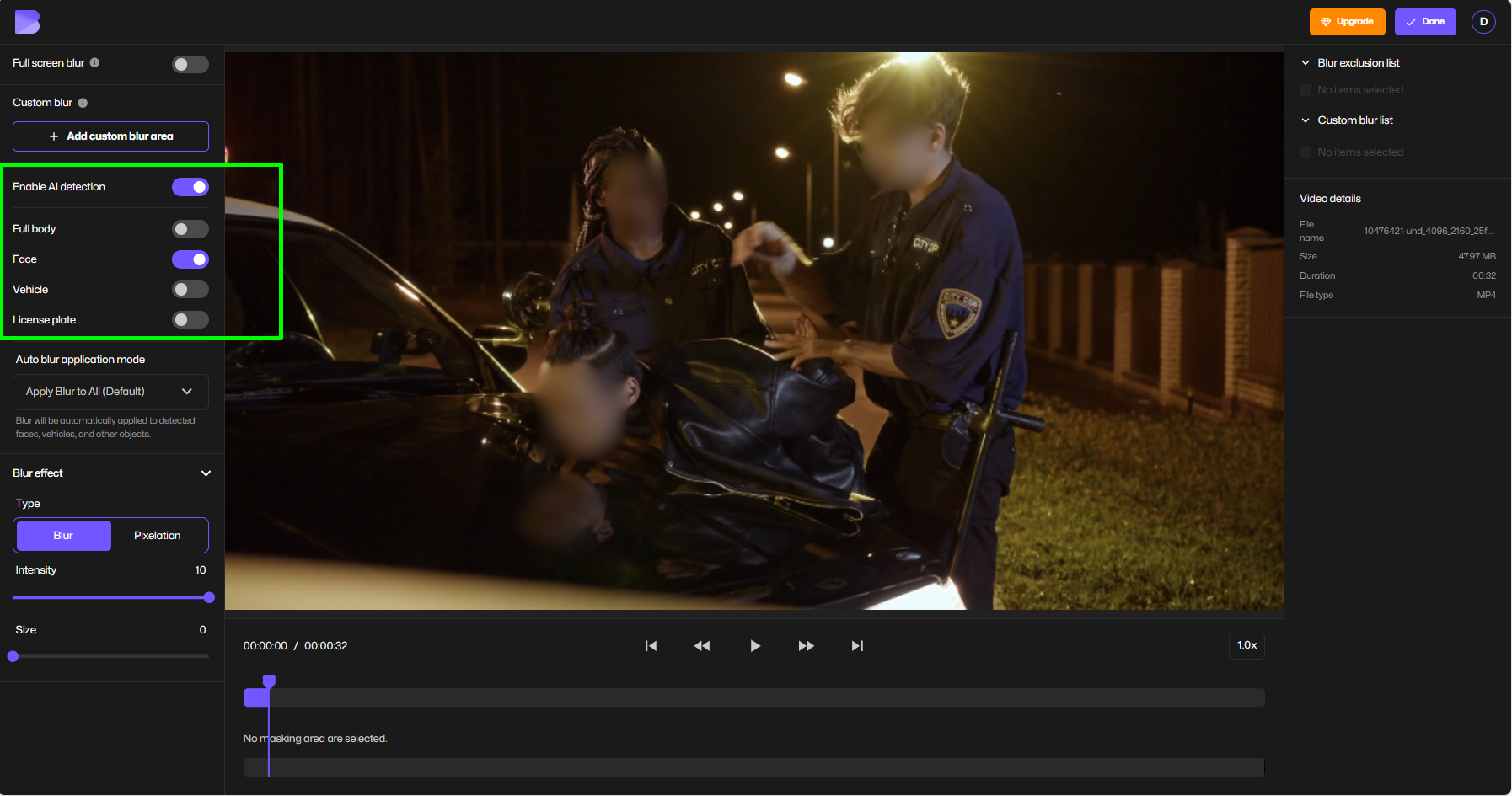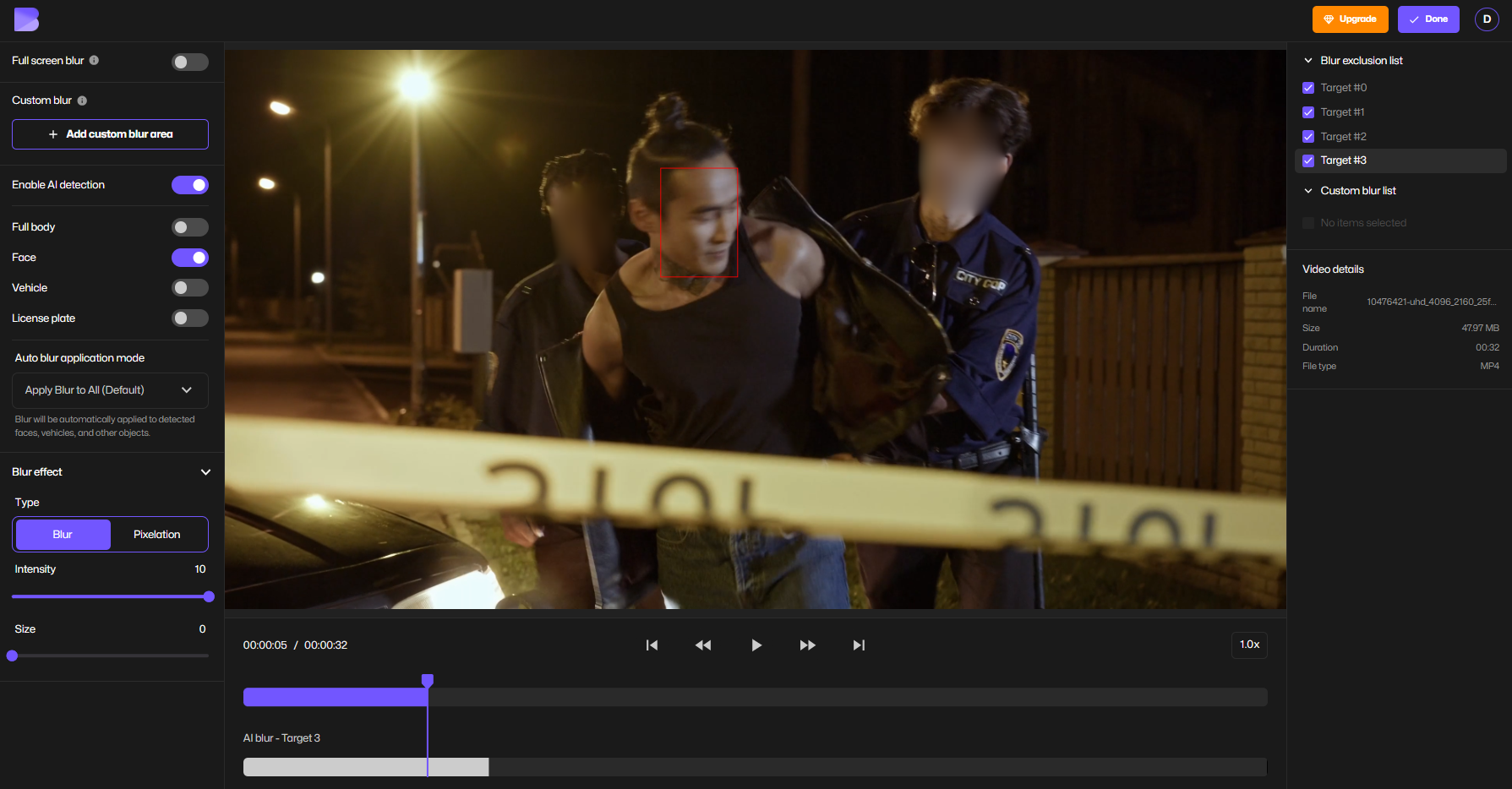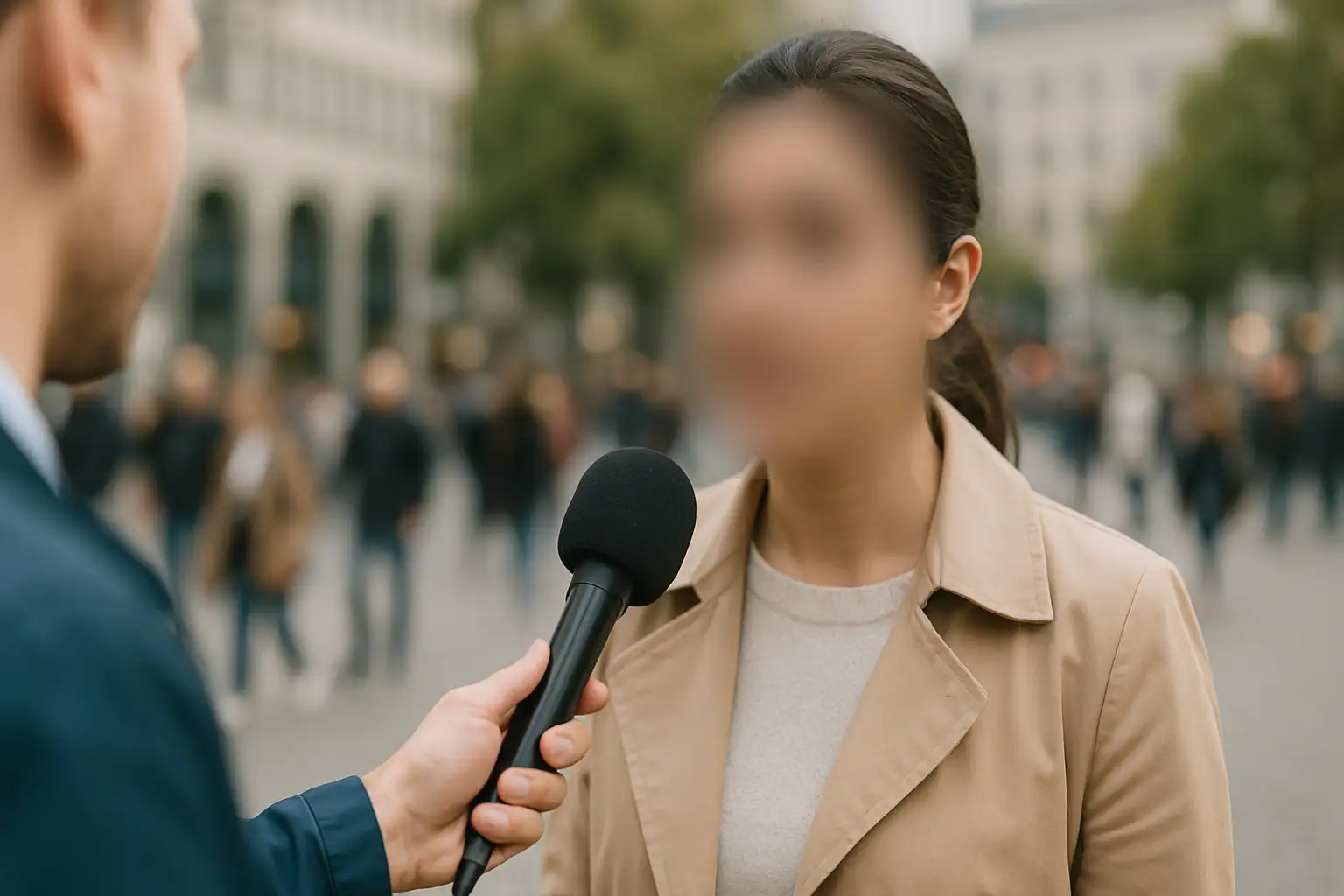Law enforcement technology is undergoing a profound transformation driven by innovative advancements in artificial intelligence, data security, and connected devices. Police departments and public safety agencies are embracing these cutting-edge tools to enhance efficiency, improve response times, and create safer communities.
This guide will delve into the most impactful emerging technologies and trending tools, highlighting their applications and the crucial role of privacy-preserving solutions like BlurMe's AI face blur technology.
The Rise of Artificial Intelligence in Law Enforcement
Artificial intelligence in law enforcement is no longer a futuristic concept but a present-day reality. AI public safety applications are diverse, ranging from predictive policing to sophisticated video analytics. This shift represents a monumental leap forward in how law enforcement identifies people, processes information, and makes critical decisions.
AI-Powered Predictive Policing: Smarter, Proactive Safety
One of the most significant applications of AI police technology is predictive policing. By analyzing vast datasets—including crime statistics, demographic information, and even weather patterns—AI algorithms can identify areas and times with a higher probability of criminal activity. This allows law enforcement agencies to deploy resources more strategically, preventing crimes before they occur. While promising, this technology also necessitates robust discussions around bias and ethical implementation to ensure fairness and transparency.
Enhancing Investigations with AI in Criminal Justice
AI in criminal justice is revolutionizing investigative processes. AI tools can rapidly sift through mountains of evidence, from digital communications to surveillance footage, identifying patterns and connections that would take human analysts weeks or months to uncover. This includes:
- Facial Recognition: Used for identifying suspects from databases or surveillance.
- Speech-to-Text Analysis: Transcribing audio evidence and highlighting key phrases.
- Predictive Analytics: Forecasting potential threats or identifying individuals at risk.
These tools significantly accelerate investigations, leading to quicker resolutions and more effective justice.
The Power of Video Analytics and Surveillance Technology
Modern law enforcement technology heavily relies on advanced video analytics. With the proliferation of CCTV cameras, bodycams, and dashcams, the sheer volume of video data can be overwhelming. This is where AI in policing shines.
Smart Surveillance: Beyond Just Recording
AI-powered video analytics can automatically detect suspicious activities, identify vehicles, and even flag unusual behavior in real-time. This reduces the need for constant human monitoring, allowing officers to focus on more critical tasks. Features include:
- Object Detection and Tracking: Following specific individuals or vehicles through multiple camera feeds.
- Anomaly Detection: Identifying deviations from normal patterns, such as loitering or unauthorized access.
- Behavioral Analysis: Alerting to potential fights, vandalism, or other illicit acts.
Body Worn Cameras and Dashcams: Accountability and Evidence
Bodycams and dashcams have become standard technology in law enforcement, providing crucial evidence and increasing accountability. However, the footage often contains sensitive personal information about the public, including faces and license plates. This is where data security solutions and tools like BlurMe become indispensable.
Data Security and Privacy: A Paramount Concern in Law Enforcement
With the increased use of sophisticated law enforcement technology, the importance of data security and compliance solutions cannot be overstated. Protecting sensitive data, ensuring privacy, and complying with regulations like GDPR and FOIA are critical challenges.
The Need for Robust Data Security Tools
Law enforcement agencies handle vast amounts of personal and sensitive data. Implementing strong data security tools is essential to prevent breaches, unauthorized access, and misuse of information. This includes encryption, secure storage, and strict access controls.
Redaction Software: Protecting Privacy in a Digital Age
One of the most critical aspects of data security and compliance, especially with video evidence, is effective redaction. AI redaction software and redaction tools are designed to automatically obscure sensitive information in images and videos.
BlurMe is at the forefront of this technology, offering advanced automatic redaction software that uses AI to detect and blur faces, license plates, and other personally identifiable information (PII) in video footage. This is vital not only for video blur but also for:
- FOIA and GDPR Requests: Fulfilling disclosure requirements while protecting individual privacy.
- Evidence Sharing: Redacting sensitive details before sharing footage with external parties or the public.
- Internal Training: Using real-world footage without compromising privacy.
BlurMe: Your Partner in AI-Powered Video Redaction

BlurMe's cutting-edge video redaction software for law enforcement offers unparalleled efficiency and accuracy. Our AI face blur technology automatically identifies and blurs faces in video, ensuring that sensitive information is protected while preserving the integrity of the evidence.
How BlurMe's AI Face Blur Works:
- Upload Your Footage: Easily upload bodycam, CCTV, or dashcam video.

- Enable AI Detection: BlurMe's advanced AI automatically detects faces, license plates, and other specified objects. Tracking and keeping them blurred even while movement.

- Automatic Redaction: The identified elements are instantly blurred or pixelated even while moving. You can then adjust the blur size and intensity as you want.

- Select Blur: You can blur and unblur selected targets to choose what should be shown.

- Review and Export: Review the redacted video and export it in your desired format, fully compliant and privacy-protected.

BlurMe provides a seamless and reliable solution. Our face anonymization technology ensures that you can utilize your video assets responsibly and securely.
Trending Tools in Law Enforcement: Specific Examples
Beyond the overarching categories, several specific law enforcement technology tools are gaining traction due to their immediate impact and efficiency. These tools leverage various forms of AI in policing and data security solutions to empower officers and investigators.
1. Digital Forensics Platforms

These sophisticated software suites help extract, preserve, and analyze digital evidence from computers, mobile devices, and cloud sources.
- Examples: Cellebrite UFED, Magnet AXIOM, X-Ways Forensics.
- How they help: Crucial for cybercrime investigations, examining evidence from seized devices, and linking digital footprints to criminal activity. They employ AI in criminal justice for faster data parsing and analysis.
2. Crime Mapping and Analysis Software (GIS-based)

Geographic Information System (GIS) tools visually represent crime data, helping agencies understand patterns, hot spots, and spatial relationships.
- Examples: ArcGIS, ShotSpotter (integrated with mapping), HunchLab (predictive mapping).
- How they help: Informing resource deployment, developing crime prevention strategies, and allowing officers to visualize crime trends in real-time. These are direct applications of AI public safety and AI police for strategic planning.
3. Real-Time Crime Centers (RTCC) Software

Integrated platforms that fuse data from various sources—CCTV, CAD (Computer-Aided Dispatch), RMS (Records Management Systems), social media—into a single operational picture for immediate analysis and response.
- Examples: Genetec Security Center, Fusus, Motorola Solutions CommandCentral.
- How they help: Providing situational awareness during critical incidents, enabling rapid intelligence gathering, and coordinating multi-agency responses. Often incorporate AI law enforcement for live video analytics and anomaly detection.
4. Facial Recognition and Biometric Identification Systems

Beyond general AI capabilities, specific tools are designed for robust biometric identification, integrating with databases and real-time feeds.
- Examples: NEC NeoFace Reveal, Idemia MorphoTrak.
- How they help: Identifying suspects from surveillance footage, verifying identities, and assisting in missing persons cases. Raises significant privacy concerns, making face anonymization and AI face blur tools like BlurMe essential for public-facing data.
5. Automated License Plate Recognition (ALPR) Systems

Cameras mounted on vehicles or fixed locations automatically scan and read license plates, checking them against hotlists of wanted vehicles.
- Examples: Rekor Systems, Flock Safety, ELSAG.
- How they help: Locating stolen vehicles, identifying vehicles associated with Amber Alerts, and monitoring known offenders. Often integrates with broader AI in policing platforms for comprehensive data analysis.
6. Drone and Robotics Platforms

Specialized unmanned aerial vehicles (UAVs) and ground robots equipped with cameras and sensors for various missions.
- Examples: DJI Matrice series (drones), Boston Dynamics Spot (robotics for hazardous environments), Teledyne FLIR (robotics for bomb disposal).
- How they help: Aerial surveillance, search and rescue, hazardous materials handling, and tactical support, reducing risk to officers.
7. Virtual Reality (VR) and Augmented Reality (AR) Training Simulators

Immersive systems designed to provide realistic training scenarios for officers.
- Examples: Axon VR Training, VirTra, Street Smarts VR.
- How they help: Improving decision-making under stress, practicing de-escalation techniques, and enhancing tactical skills in a safe environment.
Emerging Technologies on the Horizon for Public Safety
The landscape of law enforcement technology is constantly evolving. Here are a few more areas to watch:
Drones and Robotics: Expanding Operational Capabilities
Drones are increasingly used for surveillance, search and rescue operations, and crime scene mapping. Robotics can assist in dangerous situations, such as bomb disposal or reconnaissance in hazardous environments. These tools enhance officer safety and expand operational reach.
Augmented Reality (AR) and Virtual Reality (VR) Training
AR and VR are transforming police training, offering immersive and realistic simulations for de-escalation tactics, active shooter scenarios, and crime scene investigation. This allows officers to practice critical skills in a safe and controlled environment.
Tips for Implementing New Law Enforcement Technology
- Prioritize Training: Ensure officers are thoroughly trained on new equipment and software.
- Focus on Integration: Choose technologies that can integrate seamlessly with existing systems.
- Address Ethical Concerns: Establish clear policies and guidelines for the ethical use of AI and surveillance.
- Embrace Data Security: Implement robust data security solutions from the outset, including automatic redaction software like BlurMe.
- Stay Informed: Keep abreast of emerging trends and technologies to maintain a cutting edge.
FAQ: Your Questions About Law Enforcement Technology Answered
Q: What is the primary benefit of AI in law enforcement?
A: AI in law enforcement significantly enhances efficiency, accuracy, and proactive capabilities, from predictive policing to rapid evidence analysis, leading to smarter and faster investigations and crime prevention.
Q: How does BlurMe help with video evidence?
A: BlurMe provides video redaction software for law enforcement that uses AI face blur and face anonymization to automatically blur sensitive information like faces and license plates in video footage, ensuring privacy and compliance with regulations like FOIA and GDPR. You can learn more about how to Blur Face in Video and Video Redaction Service.
Q: Why is data security crucial for police departments?
A: Police departments handle vast amounts of sensitive personal data. Robust data security solutions are essential to protect this information from breaches, maintain public trust, and comply with strict privacy regulations. Our guide on data security and compliance solution provides more insights.
Q: Can AI systems be biased?
A: Yes, AI systems can reflect biases present in the data they are trained on. It is crucial to implement ethical AI guidelines, conduct regular audits, and ensure diverse datasets to mitigate bias in AI police applications.
Q: What is the importance of video redaction for bodycam footage?
A: Bodycam footage often contains sensitive PII. Video redaction software for law enforcement, like BlurMe's automatic redaction software, is essential for anonymizing this data before public release or sharing, ensuring privacy compliance (e.g., GDPR laws and guidelines) and protecting individuals. See our Video Redaction Software for Law Enforcement for details.
Q: How do I blur faces in a video quickly?
A: Using an AI redaction software like BlurMe, you can automatically detect and blur faces in video with high accuracy and speed. Tools like BlurMe offer a face tracking blur tool for efficient processing.
Q: Where can I find more information about video redaction for CCTV?
A: You can learn more about redacting CCTV footage to protect privacy in public spaces by reading our article on CCTV Redaction Software: Protect Privacy in Public Spaces. Also, explore how to Blur CCTV Surveillance Footage.
Q: What are the best redaction software options for FOIA and GDPR requests?
A: The Best Redaction Software for FOIA and GDPR Requests will offer robust AI-powered automatic redaction capabilities, such as those provided by BlurMe.









